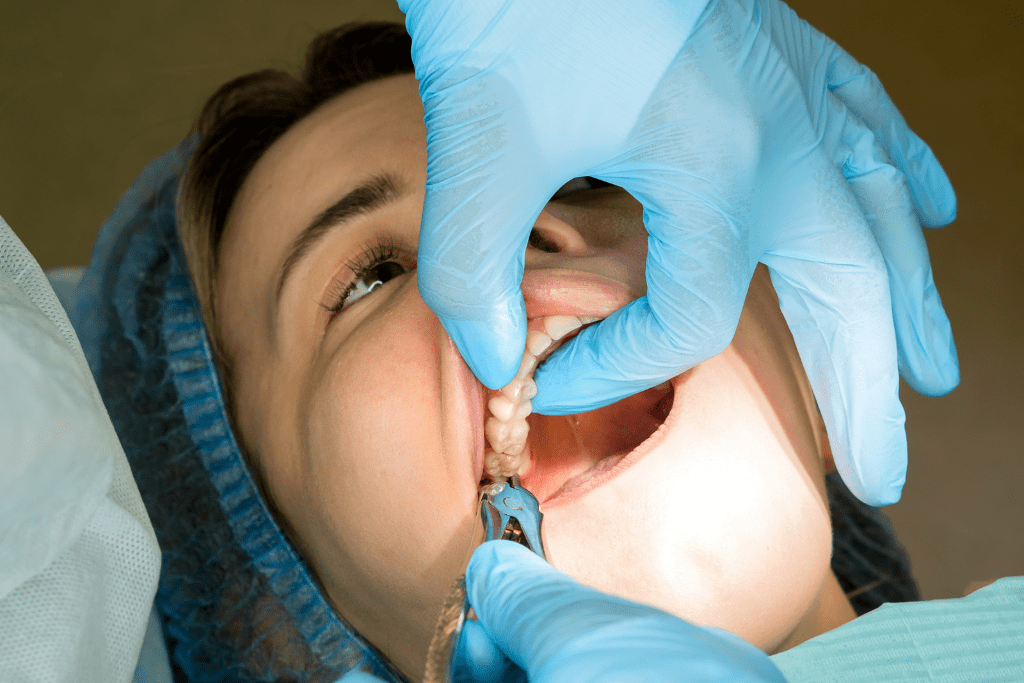Tooth removal, also known as tooth extraction, is a common dental procedure that helps eliminate pain, infection, or damaged teeth. However, one of the most frequent concerns patients have after extraction is when it’s safe to eat normally again. Understanding this timeline is essential to promote healing and avoid complications like dry socket or infection.
If you’ve recently undergone Tooth Removal in Islamabad, your dentist has likely given you aftercare instructions — but it’s always good to know the reasoning behind them. Let’s explore the common questions patients ask about post-extraction diet recovery and safe eating habits.

How Soon Can I Eat After Tooth Removal?
You can typically start drinking clear fluids within a few hours after the procedure once the bleeding has stopped. However, solid foods should be avoided for the first 24 hours.
For the first day:
- Stick to cool, soft foods like yogurt, smoothies, and soup.
- Avoid using a straw, as suction can dislodge the blood clot protecting your socket.
- Do not chew near the extraction site.
The goal during this phase is to allow the gum tissue to begin healing undisturbed.
What Foods Are Safe to Eat After Tooth Extraction?
During the first 3–5 days, soft and nutrient-rich foods are your best friends. These include:
- Mashed potatoes
- Scrambled eggs
- Oatmeal or porridge
- Applesauce
- Protein shakes
- Smoothies (without seeds)
- Broths and blended soups
Avoid spicy, crunchy, or chewy foods — they can irritate the wound or get stuck in the socket.
As healing progresses, you can slowly introduce semi-solid foods such as rice, pasta, or soft fish after 4–5 days.
When Can I Resume a Normal Diet After Tooth Removal?
Most people can return to their normal diet after 7–10 days, depending on the complexity of the extraction and how well they heal.
- Simple extractions: Healing is typically faster; soft foods for 2–3 days, then gradual return to normal meals.
- Surgical or wisdom tooth extractions: May take up to 10–14 days before resuming regular foods.
Your dentist will provide guidance based on your healing progress during follow-up visits.
How Can I Tell If My Mouth Is Healing Properly?
Proper healing after tooth removal includes:
- Minimal swelling or bleeding after 2–3 days
- Reduced pain each day
- Gum tissue closing over the extraction site
However, if you experience increasing pain, swelling, bad breath, or a foul taste, it could indicate a dry socket or infection. In such cases, contact your dentist immediately for evaluation.
Remember: Each person heals differently, so don’t rush the recovery process.
Can I Eat Hot or Spicy Foods After Tooth Extraction?
Not immediately. Hot foods or drinks can increase bleeding, while spicy foods may irritate the healing area. Wait at least 3–5 days before reintroducing these into your diet — and even then, start with mild temperatures and flavors.
To test readiness, try eating lukewarm soup. If you feel no discomfort, you can slowly transition to warmer foods over the next few days.
Reviews: Real Experiences from Our Patients
“After my wisdom tooth removal, I was nervous about eating again. The clinic’s detailed guidance helped so much! By day five, I could eat soft pasta comfortably. Excellent care!”
“My dentist explained the recovery diet clearly. Following the plan made healing smooth — no pain, no infection. Highly recommended for anyone needing tooth removal in Islamabad.”
“Great experience! They advised what to eat at every stage. I resumed my normal meals by day eight without any issues. Truly professional service.”
What Foods Should Be Strictly Avoided After Extraction?
During the healing process, certain foods and habits can delay recovery or cause complications. Avoid:
- Crunchy snacks (chips, nuts, popcorn)
- Sticky foods (caramel, chewing gum)
- Carbonated or alcoholic drinks
- Smoking (it delays healing and increases infection risk)
- Using straws (can cause dry socket)
Keeping these away from your diet for at least a week helps protect your healing gums and maintain comfort.
What Happens If I Eat Solid Food Too Soon?
Eating solid food before your gums have properly healed can:
- Dislodge the blood clot, causing dry socket (painful, exposed bone)
- Introduce bacteria and lead to infection
- Prolong healing time
If you accidentally chew near the extraction site and feel pain or notice bleeding, rinse gently with saltwater and contact your dentist for advice.
Patience is key — it’s better to wait a few days than to risk complications that require another dental visit.
Are There Special Dietary Tips for Wisdom Tooth Removal?
Yes. Wisdom tooth extractions often require a longer soft-food period due to deeper wounds. Follow a soft or semi-liquid diet for at least 5–7 days, focusing on:
- Smooth soups, protein shakes, mashed vegetables, and pureed fruits
- Avoiding chewing directly over the extraction area
- Gradually introducing solids only when pain and swelling reduce
This cautious approach prevents irritation and ensures steady healing.
Conclusion
Resuming a normal diet after tooth removal takes time, care, and patience. While simple extractions may allow you to eat solid foods within a few days, complex or surgical removals can require up to two weeks. Always listen to your dentist’s instructions, maintain gentle oral hygiene, and reintroduce foods slowly.
Your recovery depends not only on the treatment but also on how well you care for your mouth afterward. With the right diet and discipline, you’ll return to your regular meals — and a pain-free smile — sooner than you think!
Contact Us
Address : Office Number LG 20 - 21 Interlace Plaza I-8 Markaz Islamabad
Phone : +92 333 5705871
Email : [email protected]




Comments